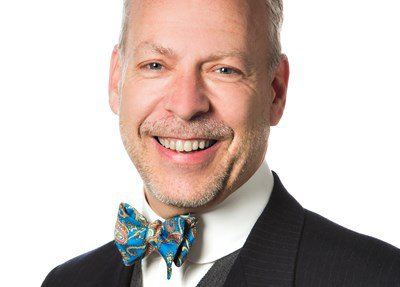Review of M. Zachary Johnson’s “Emotion in Life and Music” – Article by G. Stolyarov II
******************************
 Everyone intuits an emotional substance to music, yet few can explain its nature and origins. According to some, it is merely subjective; a piece evokes feelings that are personal to the listener but have no basis in the actual structure, melody, and harmonies of the composition itself. According to others, emotion in music can only be explained if anchored to a particular story or the historical context of the composer’s life and motivations. Still others disdain talk of musical emotion altogether and prefer a pure formalism, sometimes seeking to explain why music that feels jarring, discordant, or no way in particular can still be great because of some convention-flouting thing it does. M. Zachary Johnson, a teacher and historian of music and himself an accomplished composer, differs from all of those commonplace views and, in Emotion in Life and Music: A New Science, sets forth a framework by which the mathematics inherent in musical relationships and the feelings to which music gives rise are not only reconciled but shown to be inextricably linked, providing “connection of the emotion with the exact mathematical ratios which measure pitch distance and explain our qualitative affective experience” (p. 163).
Everyone intuits an emotional substance to music, yet few can explain its nature and origins. According to some, it is merely subjective; a piece evokes feelings that are personal to the listener but have no basis in the actual structure, melody, and harmonies of the composition itself. According to others, emotion in music can only be explained if anchored to a particular story or the historical context of the composer’s life and motivations. Still others disdain talk of musical emotion altogether and prefer a pure formalism, sometimes seeking to explain why music that feels jarring, discordant, or no way in particular can still be great because of some convention-flouting thing it does. M. Zachary Johnson, a teacher and historian of music and himself an accomplished composer, differs from all of those commonplace views and, in Emotion in Life and Music: A New Science, sets forth a framework by which the mathematics inherent in musical relationships and the feelings to which music gives rise are not only reconciled but shown to be inextricably linked, providing “connection of the emotion with the exact mathematical ratios which measure pitch distance and explain our qualitative affective experience” (p. 163).
Johnson’s concept of the psychological signature of a piece based on three measurable dimensions of intensity, speed, and affect provides a rubric for discerning which basic emotions a musical passage will elicit in the listener. As Johnson points out, these are generalized emotions such as pride or anguish, not anchored to a particular context (e.g., the feeling of accomplishment at having run a marathon or the feeling of having been betrayed) – although other media, such as the storyline of an opera, and even the listener’s personal experiences can provide such a context, which is indeed why different listeners may have different subjective associations with a piece of a particular, objective psychological signature. Even though musical tastes do vary widely among individuals, Johnson convincingly articulates that these tastes are still in reference to something in particular and that an individual’s response to the objective psychological signature of a piece tells more about the listener than about the piece itself. This is a welcome, refreshing contrast to the often militantly intolerant subjectivism of those who proclaim that there are no distinctions of quality or even nature to music or even art in general – that it is all up to the arbitrary preferences of the composer and/or listener, and that anyone who dares challenge this dogma deserves condemnation in the most strident terms. Perhaps contemporary Western culture, or at least the occasional oasis of rationality within it, is beginning to turn away from such absurdity, and Johnson contributes theoretical support to the view most articulately (in our era) espoused by Alma Deutscher that music should be beautiful.
Why is it desirable for dissonance to be resolved? Johnson explains that “Feelings such as pleasure, joy, serenity, inner harmony and balance – these are settled, complete states of mind. They are self-sufficient rewards, forms of satisfaction and contentment. They are ends in themselves. Feelings such as pain, suffering, fear, anger, restlessness, emotional distress and chaos – these are unsettled, incomplete, resolution-demanding states of mind. They motivate us to take some form of productive or corrective action. In respect to psychology, these are a propulsion to satisfy a need, to resolve a clash, to soothe oneself and heal, to strengthen, to gain adaptive flexibility, to stabilize the psyche and bring order to it” (p. 65). Wholesome, constructive music does not merely exist for its own sake but can greatly assist individuals in this task of achieving emotional integrity and strength. This includes music which expresses the darker or incomplete emotions, as long as this expression offers the listener an effective laboratory of the mind to work through such emotions without the risks and harms that would give rise to them in one’s personal life. Johnson notes that “Music rewards you for successful cognitive action, not for successful existential action. And when it gives you darker emotions, the function is not to indicate loss and failure, but to provide a means of sensually enjoying and studying and contemplating the states of consciousness, independently of the issue of actual material loss or gain – which is a form of self-knowledge, an affirmation of the value of one’s own faculties, and therefore itself a spiritual gain” (p. 110). However, there is a difference between a healthy, structured, rational exploration of the darker emotions with the intent of achieving resolution and completeness and the self-destructive embrace of those emotions, which certain types of “music” attempt to inculcate.
I consider myself to be within the same broad Apollonian musical and esthetic tradition as Johnson – as contrasted with the Dionysian revelry in the shocking, debased, and unrestrained. Yet perhaps my most significant difference with Johnson is the scope of what I would encompass within the Apollonian milieu and the latitude which I would allow to certain composers whom Johnson portrays rather harshly. Yes, Richard Wagner had his long, moody, meandering passages – but when his music becomes focused, determined, and structured, it is truly majestic. Yes, Dmitri Shostakovich was often despondent, but he could also write a fugue without any dissonance – and, besides, who would not be despondent when responding to the atrocities of the Stalin regime, but needing to do so in a veiled, indirect manner to create plausible deniability? (Shostakovich, too, had his heroic moments, as in the ending to his Seventh Symphony, which is about as optimistic as one can reasonably be in the midst of the devastation of World War II.) Nor would I agree with Johnson’s portrayal of the Second Movement of Wolfgang Mozart’s Piano Concerto No. 22 in E-Flat as conveying a message of hopelessness or futility; I would rather characterize it as expressing mild, reflective melancholy. As for Arnold Schoenberg – well, Schoenberg deserves all of the criticism that Johnson has in store for him; he had no excuses for the misguided rebellion against tonality.
Yet, more generally, it is perhaps a misdirection of effort to focus on criticism of singular figures in musical or intellectual history. The massive departure of “high” music from tonality in the early 20th century certainly could not have been solely Schoenberg’s doing – nor could the intellectual seeds for this trend have been planted a century and a half in advance by Immanuel Kant (whom Johnson characterizes, following many similar assertions by Ayn Rand, as the mastermind of the end of the Enlightenment and the decline of the West). Kant had his errors, to be sure (though Rand always somehow overlooked the redeeming aspects of his immense humanism and political classical liberalism, especially in the context of his time), and Schoenberg’s music is simply not pleasant to the ear – but one could have a civilized and interesting conversation with either Kant or Schoenberg over a cup of coffee. No – the rebellion against the Enlightenment was more the doing of the rabble who cheered when the guillotine fell during the Reign of Terror. The widespread descent of music into atonality could not have occurred were it not for the slaughter of World War I, a crime of millions against millions – and against themselves. Johnson’s criticism of rock music (perhaps itself a bit harsh – but I offer my evaluation as one who has only heard the music separately from its typical “scene”) is better leveled at the ordinary revelers at Woodstock and Altamont – not the music itself (which is rather harmonious and innocuous compared to what commonly passes for popular “music” today). The tendency toward dissipation and destruction is not orchestrated by a handful of avatars of particular movements – but, rather, it lurks within the masses of people because of regrettable cognitive biases and irrational emotional urges that are the unfortunate inheritance of humankind’s deeply flawed evolutionary origins. In certain eras these destructive inclinations are subdued due to general prosperity and the proper incentives within social, political, and technological systems – whereas in other eras, arguably including our own (though not always or everywhere), they are encouraged by widespread norms of (mis)conduct, cultural portrayals, and everyday attitudes to become acted out by masses of people to great personal and societal toll. This is, in many regards, an ancient and recurring problem, sometimes taking on bizarre manifestations such as the pathological dance epidemic of 1518.
Accordingly, it is more important to advocate the Apollonian mindset in general in opposition to the Dionysian proclivities in general than to seek to single out particular instances of the latter. As long as humans continue to contend with our flawed evolutionary inheritance – which may not and should not always be our lot – and as long as some humans also retain aspects of nobility of character and aspiration for a better life, there will always be some exemplars of both the Apollonian and the Dionysian to point to. A more salient question, though, is, “Which of these paradigms is proportionally predominant?” Furthermore, how can the proportions among cultural creations be shifted in favor of the Apollonian? The more immediate problem we contend with is that there are vast quantities of people who would understand nothing in Johnson’s book and would have no knowledge of anything he praises or criticizes; they would be equally ignorant of Mozart and Beethoven, Aristotle and Kant, Schoenberg and Shostakovich, Brahms and Ayn Rand, and yet they would hate everything about any mention of them (in whatever light) – or about my review of Johnson’s book, or about a review from a critic with views diametrically opposite mine. The problem of anti-intellectualism in contemporary Western societies (particularly the United States) runs that deep, and it is evident that Johnson is gravely concerned about this predicament.
But perhaps good music can offer us a path toward a brighter future. If anti-intellectualism is the predominant cultural malaise of our time, then the inoculation against it may be found in Johnson’s articulation of the purpose of the best music as expressing the love of intelligence: “The essence of our humanity, the linchpin integrating reason and emotion, the special theme of the good life, the hallmark of virtue, the root of justice, the core of idealism and aspiration and heroism, the fundamental guardian of political freedom, and the root of all human love, is the love of man’s intelligence. […] The essence of music is precisely the love of human intelligence. Music, as nature’s reward for cognitive fitness, is the greatest medium in existence for expressing that theme” (pp. 179-180). Could exposure to great music – simple exposure, without even the theoretical explication which is accessible only at a much higher level of erudition – instill a love of intelligence in sufficiently larger numbers of people so as to turn the cultural tide? This is at least worth including as a tactic in the great, ongoing endeavor of civilizing the human mind and ensuring that the nobility of sentiment can grow to keep pace with material and technological advances.
This article is made available pursuant to the Creative Commons Attribution 4.0 International License, which requires that credit be given to the author, Gennady Stolyarov II (G. Stolyarov II). Learn more about Mr. Stolyarov here.


 Dan Sanchez
Dan Sanchez



